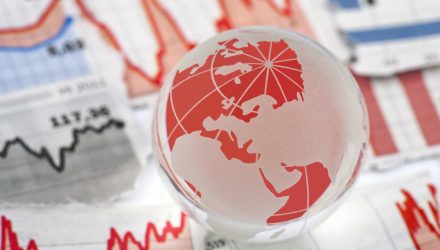Seven of the eight indexes on our world watch list posted gains through June 5, 2023. Tokyo’s Nikkei 225 continued to climb, finishing in the top spot with a YTD gain of 23.46%. The U.S.’s S&P 500 finished in second with a YTD gain of 11.76% while Germany’s DAXK jumped into third with a YTD gain of 9.09%.

World Indexes and Recent Recessions
Let’s start with a very recent chart with the latest recession. We’ve used February 3, 2020 for our start date (this is the official NBER recession start).
The chart below illustrates the comparative performance of world markets since March 9, 2009. The start date is arbitrary: The S&P 500, CAC 40 and BSE SENSEX hit their lows on March 9th, the Nikkei 225 on March 10th, the DAXK on March 6th, the FTSE on March 3rd, the Shanghai Composite on November 4, 2008, and the Hang Seng even earlier on October 27, 2008. However, by aligning on the same day and using a log-scale vertical axis, we get an excellent visualization of the relative performance. I’ve indexed each of the eight to 800 on the March 9th start date. The callout in the upper left corner shows the percent change from the start date to the latest weekly close.
Here is the same visualization, this time starting on October 9, 2007, a previous closing high for the S&P 500. This date is also approximately the mid-point of the range of market peaks, which started on June 1st for the CAC 40 and ended on January 8, 2008 for the SENSEX.
For a longer look at the relative performance, our final chart starts at the turn of the century, again indexing each at 800 for the start date.
Examples of single country ETFs:
Originally published by Advisor Perspectives on June 5, 2023.
For more news, information, and analysis, visit the Modern Alpha Channel.
Note: I track Germany’s DAXK a price-only index, instead of the more familiar DAX index (which includes dividends), for consistency with the other indexes, which do not include dividends.
This article was originally written by Doug Short. From 2016-2022, it was improved upon and updated by Jill Mislinski. Starting in January 2023, AP Charts pages will be maintained by Jennifer Nash at VettaFi | Advisor Perspectives







